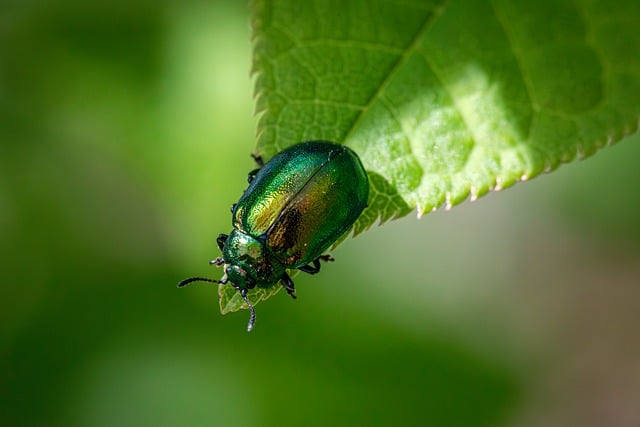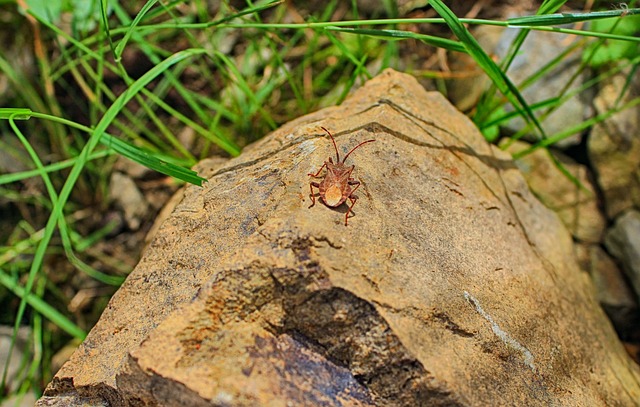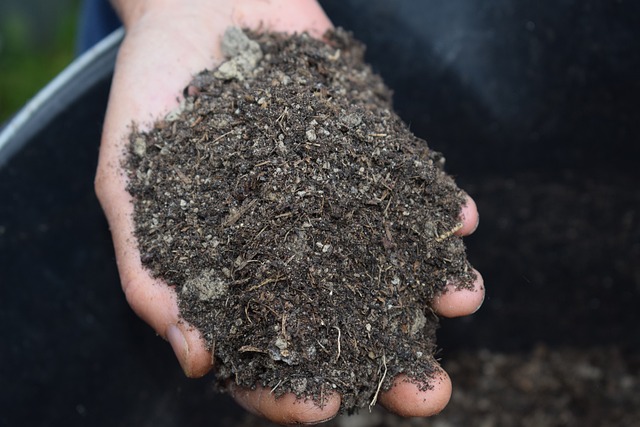Traditional synthetic pest control methods pose significant environmental risks, leading to a surge in demand for Eco-Friendly Pest Control as people become more environmentally conscious. This approach uses natural products, non-toxic methods, and targeted applications to minimize ecological damage while managing pests effectively. Key eco-friendly techniques include integrating natural predators (biocontrol), using plant-based repellents, implementing physical and cultural control methods, and leveraging innovative technology. These methods have proven successful in both residential and commercial settings, contributing to healthier ecosystems and biodiversity while offering safe alternatives for people and pets. The future of pest management is increasingly focused on sustainability through natural and technological advancements.
In today’s eco-conscious world, understanding the environmental impact of traditional pest control methods has become paramount. These chemical-heavy approaches often leave harmful residues, disrupt ecosystems, and pose risks to human health. This article delves into the rise of Eco-Friendly Pest Control as a sustainable alternative. We explore key principles, from non-toxic solutions and biocontrol using natural predators to plant-based repellents and simple physical methods. By harnessing these techniques, we can protect our homes and landscapes without sacrificing the health of our planet.
Understanding Traditional Pest Control Methods and Their Environmental Impact

Traditional pest control methods often rely on synthetic chemicals that can have detrimental effects on the environment. These chemicals, while effective in eliminating pests, can contaminate soil, water sources, and even contribute to air pollution. The impact extends beyond local ecosystems, as these toxins can travel through food chains, affecting both wildlife and human health. In today’s world, where environmental consciousness is higher than ever, there is a growing demand for eco-friendly alternatives.
Eco-friendly pest control offers a more sustainable approach by utilizing natural methods and products that pose less risk to the planet. This shift not only minimizes ecological damage but also promotes a healthier balance between humans and nature. By embracing these alternative methods, we can ensure a cleaner, safer environment for both present and future generations while still effectively managing pests.
The Rise of Eco-Friendly Pest Management: A Sustainable Approach

In recent years, there’s been a growing awareness of the environmental impact of traditional pest control methods, leading to a significant rise in demand for eco-friendly alternatives. Consumers and businesses alike are increasingly seeking sustainable solutions that protect not just their properties but also the surrounding ecosystem. This shift towards greener practices has prompted innovations in the industry, resulting in advanced eco-friendly pest management techniques.
Eco-friendly pest control offers a safer approach by utilizing natural products, non-toxic methods, and targeted applications to eliminate pests effectively. It’s a holistic strategy that considers the interconnectedness of ecosystems, ensuring minimal harm to beneficial insects, birds, and other wildlife while still achieving robust pest suppression. This sustainable method not only reduces environmental pollution but also fosters a healthier and more balanced environment for all.
Key Principles of Eco-Friendly Extermination: Non-Toxic Solutions

When it comes to eco-friendly extermination, one of the fundamental principles is adopting non-toxic solutions. This approach prioritizes the use of chemical substances that are safe for both people and the environment, marking a significant departure from traditional pest control methods. These alternative solutions leverage natural ingredients or innovative technology to combat pests effectively while minimizing harm.
By opting for non-toxic eco-friendly pest control, homeowners and businesses can contribute to a healthier ecosystem without compromising on pest management. Such methods often include using essential oils, botanical extracts, or beneficial insects that target specific pests naturally, ensuring a safer living environment for all inhabitants and preserving the delicate balance of nature.
Integrating Natural Predators: Biocontrol as a Powerful Tool

Integrating natural predators, or biocontrol, is a powerful tool in the arsenal of eco-friendly pest control. By introducing beneficial insects and other natural enemies to target specific pests, this method offers a sustainable alternative to chemical pesticides. For instance, ladybugs feed on aphids, helping to control their populations without causing harm to humans or pets. Similarly, parasitoid wasps lay eggs inside pest caterpillars, ultimately leading to the wasp larva consuming the caterpillar from within.
This approach not only reduces the need for synthetic chemicals but also promotes a balanced ecosystem. Biocontrol is particularly effective in integrated pest management (IPM) strategies, which focus on long-term prevention and minimal use of pesticides. By harnessing the power of nature’s own control mechanisms, eco-friendly pest control methods provide an efficient, safe, and environmentally conscious solution for managing pests while preserving biodiversity.
Plant-Based Repellents: Harnessing Aromatic Power

Plant-based repellents offer a captivating solution in the realm of eco-friendly pest control, harnessing the power of nature’s aromatics to ward off unwanted invaders. These natural alternatives are derived from essential oils and plant extracts, which possess insect-repelling properties. The subtle scents, often refreshing and aromatic, create an environment that pests find less appealing, acting as a gentle barrier without causing harm to humans or pets.
The effectiveness of these repellents lies in their ability to disrupt pest behavior without resorting to harsh chemicals. Oils like citronella, lavender, and peppermint are renowned for their insect-repelling qualities, making them popular choices for creating natural bug sprays and home remedies. By incorporating these plant-based solutions into daily routines, individuals can contribute to a greener approach to pest management while enjoying the added benefits of pleasant aromas in their living spaces.
Physical and Cultural Control Methods: Simple Yet Effective Techniques

Physical and Cultural Control Methods offer simple yet effective techniques for eco-friendly pest control. These methods focus on removing or altering habitats to prevent pest infestations, rather than using chemicals. For example, maintaining clean and clutter-free spaces reduces hiding places for pests like rodents and insects. Regular sanitation practices, such as promptly cleaning up spills and disposing of waste, can significantly deter pest activity.
Cultural controls involve changing human behaviors to minimize contact with pests. This includes proper food storage, sealing entry points, and using physical barriers. For instance, storing grains in airtight containers prevents access by rodents and insects. Sealing gaps around pipes and doors helps prevent the entry of termites and other wood-boring insects. These simple yet powerful methods are essential components of an integrated pest management strategy, promoting a healthier environment while effectively controlling pests.
Case Studies: Real-World Success Stories of Eco-Friendly Pest Control

Eco-friendly pest control has proven to be a game-changer in the world of extermination, offering successful real-world case studies that challenge traditional methods. These stories showcase innovative approaches that not only effectively manage pests but also minimize environmental impact. For instance, some companies are utilizing natural predators like ladybugs and spiders to control insect populations, reducing the need for chemical pesticides. This method has been particularly effective in organic farming, where maintaining ecological balance is paramount.
Another notable case involves the use of ionizing radiation to kill pests, a process that leaves no toxic residue. This eco-friendly technique has been adopted by several large-scale manufacturers as a safer alternative to chemical treatments. Additionally, essential oils like peppermint and citronella have gained popularity for their pest-repellent properties without causing harm to humans or pets. These case studies demonstrate that eco-friendly pest control is not just a trend but a viable and successful solution for both residential and commercial settings.
Future Trends in Sustainable Pest Management

As the world shifts towards sustainability, future trends in eco-friendly pest management are expected to revolutionize the industry. One prominent trend is the increased adoption of natural and biological methods for controlling pests, such as using beneficial insects or plant-based repellents. These approaches not only minimize environmental impact but also promote biodiversity, making them more harmonious with ecological systems.
Additionally, technological advancements like smart sensors and AI-driven monitoring systems will play a pivotal role in precise and targeted pest control. These innovations enable early detection of pest infestations, allowing for the application of eco-friendly solutions only when needed. This not only reduces the use of harmful chemicals but also contributes to long-term sustainability goals by fostering healthier ecosystems.
